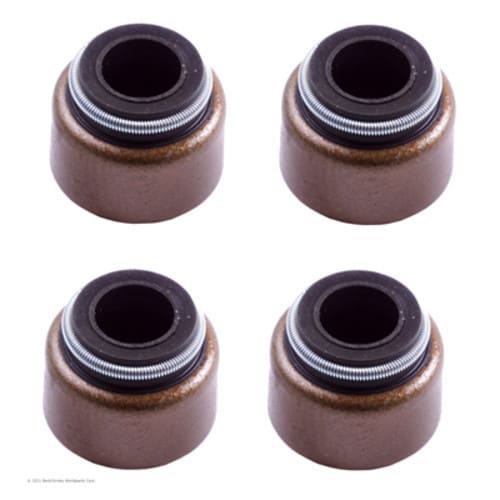
Valves control how much air and fuel is allowed into the cylinders. Combustion gases are prevented from going through the valves thanks to the sleeves or guides. However, thanks to the seals affixed to the top of the valves, the oil in the cover is prevented from being sucked into the engine. Heavy-duty rubber is typically used for these seals, which are installed in a tiny collar around the top of the valve. There are tell-tale signs of deterioration or failure when they first appear.
Turning On a Chilled Engine
A cold engine is the most apparent indicator of a broken or worn valve stem. It is normal for oil pumped up previously to settle on top of the head inside the valve cover if your automobile has been resting for an extended period, such as overnight. During a pause in motion, the rubber valve seal cools and contracts, allowing a tiny amount of air to escape. When the engine is turned on, any remaining oil is sucked through the faulty valve seal and burned. This causes the exhaust to release a bluish-white cloud of smoke.
While Driving Under Heavy Traffic Conditions
If your valve seals are leaking, you'll notice it at stoplights or in traffic. Since the throttle is not being opened, the vacuum in the intake manifold will begin to rise. The high vacuum causes the oil in the cylinder heads to condense around the valve stems. The oil is sucked past the deteriorating seal and down to the valve guide as the vehicle is accelerated, where it begins to burn off in the exhaust. As a result, billowing clouds of bluish-white smoke are now emerging from the vehicle's tailpipe. If you want the smoke to go away, you must go up to highway speeds or start cruising.
Making Use of the Brakes Without Applying Pressure to the Gas
Valve seal failure is also visible during off-throttle braking, especially on a steep descent where the accelerator pedal remains stationary. As the engine tilts lower and the intake manifold vacuum rises, oil begins to pool in front of the valve cover. After a long coast, accelerating will cause the burned oil to be expelled out the tailpipe. The engine will keep using oil if it stays that way. No amount of cruising will get the smoke emissions to stop.